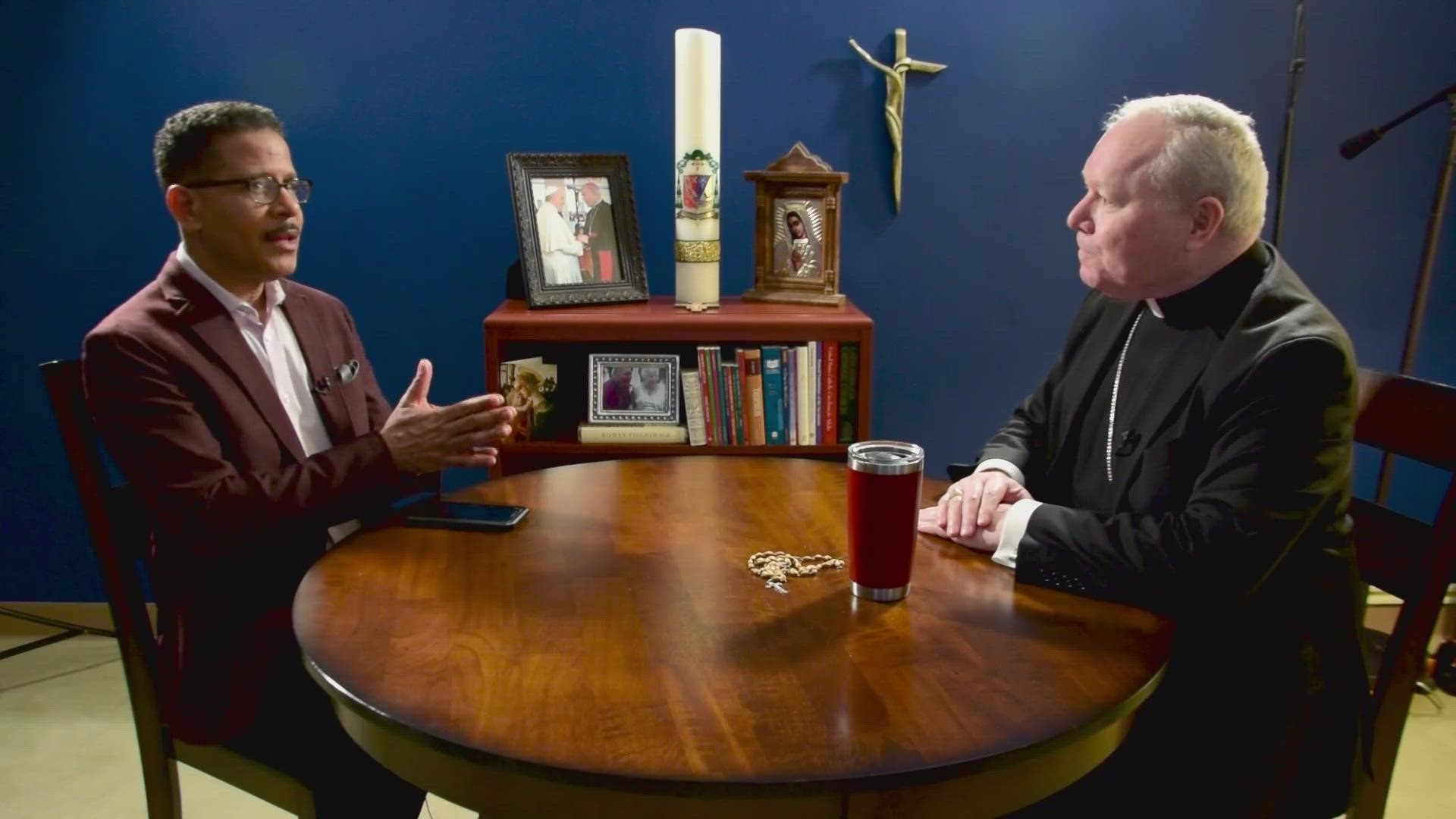WASHINGTON — This story from The Conversation is by Religion and Ethics Editor Molly Jackson.
Foreheads smudged with the sign of the cross are the most visible sign of Ash Wednesday, which begins the season of Lent in many Christian denominations. The 40-day period leads up to Holy Week, some of the most sacred days in the church calendar – including Easter, which commemorates Christians’ central belief that Jesus was crucified and buried before rising from the dead.
But if Easter is associated with celebration and triumphal joy, Lent is more a season of soul-searching and spiritual discipline. Here are some of The Conversation’s many articles exploring the history and significance of Ash Wednesday and Lent.
1. Ash Wednesday
Let’s start with the basics: What is Ash Wednesday? Why do worshippers spend the day wearing ashes?
Christians who participate in Ash Wednesday services, where clergy often daub their foreheads with the sign of the cross, are participating in a thousand-year-old tradition, explained William Johnston, a professor of religious studies at the University of Dayton. In part, the practice exists to call churchgoers to repentance as they begin the spiritual journey of Lent.
Two phrases used in services over the centuries underscore that call to penance: “Remember, man, that you are dust and to dust you shall return,” taken from the biblical Book of Genesis; and “Repent, and believe in the Gospel,” words of Jesus’ in the Gospel of Mark.
“Each phrase in its own way serves the purpose of calling the faithful to live their Christian lives more deeply,” Johnston wrote. The first urges believers to “focus on what is essential,” while the second is “a direct call to follow” Jesus’ teachings.
2. Why ashes, though?
For a deeper dive on the practice, Michael Laver of Rochester Institute of Technology looked back at ashes’ spiritual symbolism throughout history. They figure in many biblical stories, where they represent penitence and remorse.
Christian churches have used ashes to demonstrate repentance for centuries, but that isn’t to say the practice is unchanging. Laver, an Episcopal priest and historian of Christianity, traced how the Protestant Reformation initially put ashes out of favor in non-Catholic churches. They reembraced the practice in the 1800s, at a time “when many Protestant churches entered into intentional dialogue with each other and with the Catholic Church, a phenomenon that is called the ‘ecumenical movement,’” he wrote.
In recent years, many churches have been innovating yet again, offering “ashes to go” to passersby in public.
3. The long journey of Lent
After Ash Wednesday begins the 40-day period of Lent, a word whose roots refer to the “lengthening” of days in springtime. Spiritually, however, its purpose is preparation: a time of fasting and prayer before the joy of Easter.
Fasting was common by the fourth century as a way to avoid self-indulgence during a time of repentance – even marriage was prohibited during Lent, as College of the Holy Cross professor Joanne Pierce explained.
Some Christians follow traditional fasts today, but others give up something pleasurable for the entire 40 days, from chocolate to TV. But Lent is not just about giving up, according to Pierce. Its spiritual renewal is about giving, too, such as “making amends with estranged family and friends,” or doing community service.
4. Your body sans sugar
Giving up chocolate must be one of the most common Lenten vows – but what happens if you take it a step further and nix sweets entirely?
Penn State neuroscientist Jordan Gaines Lewis walked us through the science of your brain on sugar. The delight it brings most people is a “natural reward,” an incentive to keep eating carbohydrates. But “modern diets have taken on a life of their own,” she wrote: even a decade ago, the average American was estimated to consume 22 teaspoons of added sugar per day.
“The notion of sugar addiction is still a rather taboo topic,” Lewis noted. Yet experiments with animals suggest that sugar may hook us in a similar way that drugs do.
“Repeated access to sugar over time leads to prolonged dopamine signaling, greater excitation of the brain’s reward pathways and a need for even more sugar to activate all of the midbrain dopamine receptors like before,” she wrote. “The brain becomes tolerant to sugar – and more is needed to attain the same ‘sugar high.’”
5. Looking for God online
Another increasingly popular “fast” is especially 21st century: going offline.
Taking a pause from the internet, especially social media, is sometimes promoted as a way to help focus on faith and “real world” connections. That can work, but some of these theories’ assumptions about technology are misguided, argued Heidi Campbell, a Texas A&M communications expert who studies religion.
Digital fasting often buys into the idea of “technological determinism,” which often portrays technology as something dehumanizing and all-powerful. But this overlooks users’ ability to make choices about which goals of theirs technology can and can’t fulfill – including spiritual goals. Today, apps even offer to help people study religious texts, find faith-based products, or connect with others who share their beliefs.
“Technology can, in fact, be good for religion,” Campbell wrote. “The question is, how do we engage with technology thoughtfully and actively?”
Christians live out Lent in many different ways. Yet “Lent in the 21st century remains essentially the same as in centuries past,” as Pierce wrote: “a time of quiet reflection and spiritual discipline.”
Editor’s note: This story is a roundup of articles from The Conversation’s archives.

